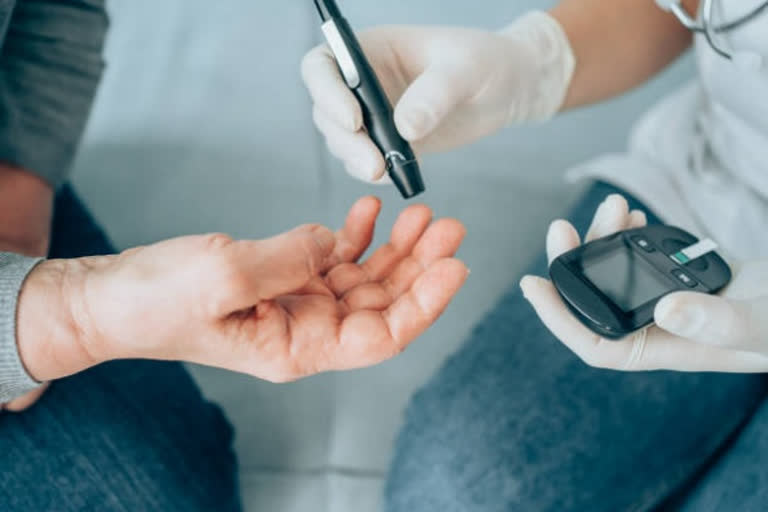Hyderabad: Diabetic ketoacidosis is a life-threatening metabolic crisis that can occur at presentation of type 1 diabetes, with acute (potentially fatal) complications including cerebral oedema and arrhythmias, and longer-term evidence of worsening glycaemic control and neurocognitive deficits in those presenting with diabetic ketoacidosis compared to those presenting without.
During the COVID-19 pandemic, an excess of diabetic ketoacidosis in people with newly diagnosed diabetes was noted across all age groups. Although there was no shortage of theories as to how SARS-CoV-2 might have contributed to the rise in diabetic ketoacidosis (or indeed the subsequent apparent increase in incidence of type 1 diabetes), a careful analysis of trends in diabetic ketoacidosis during the COVID-19 pandemic, framed in the context of pre-pandemic evidence, was lacking.
In their study in The Lancet Diabetes & Endocrinology, Niels Birkebaek and colleagues address this knowledge gap by analysing trends in diabetic ketoacidosis at diagnosis of type 1 diabetes in the largest cohort to date, comprising 104290 children from 13 national diabetes registries.
The authors first studied the pre-pandemic period (2006–19), in which 27·3% of paediatric presentations of type 1 diabetes occurred with diabetic ketoacidosis, but they noted a significant year-on-year rise in diabetic ketoacidosis prevalence (mean 1·6% [95% CI 1·3–1·9] increase per year). A higher prevalence of diabetic ketoacidosis was observed in children younger than 6 years and in female individuals.
During the pandemic, the proportion of diabetic ketoacidosis presentations rose significantly (39·4% [95% CI 34·0–45·6] in 2020 and 38·9% [33·6–45·0] in 2021) and was in excess of the predicted year-on-year rise in prevalence (32·5% [27·8–37·9] for 2020 and 33·0% [28·3–38·5] for 2021).
There was no association between excess diabetic ketoacidosis and the severity of COVID-19 (mortality was used as a surrogate) but a significant association was observed with lockdown stringency. The authors concluded that the pandemic created the perfect storm of conditions amplifying the pre-pandemic trend favouring presentation of diabetic ketoacidosis at first diagnosis of type 1 diabetes in children.
Although it is not possible to ascertain whether the excess diabetic ketoacidosis prevalence observed during the pandemic represented higher prevalence in a population with similar type 1 diabetes incidence or a higher incidence of type 1 diabetes per se, this study has several strengths.
First, the large sample size, geographical coverage, and use of both 2020 and 2021 data increases confidence that the trend observed is genuine. Second, a focus on children in whom a presentation with diabetic ketoacidosis is likely to signify a new diagnosis of type 1 diabetes is also a strength as cohorts comprising adults might have other diabetes diagnoses. Third, the novel finding of an association between lockdown stringency and diabetic ketoacidosis, but not COVID-19 mortality, suggests that the excess prevalence of diabetic ketoacidosis might be dissociated from direct SARS-CoV-2 infection.
Of course, mortality itself could be a poor surrogate for the prevalence of SARS-CoV-2 infection in children, who are more likely to have asymptomatic infection and less likely to develop severe COVID-19. This study has important implications. That the prevalence of diabetic ketoacidosis was increasing before the pandemic has been reported previously and been shown to be associated with vulnerable groups (eg, people from socioeconomically deprived and minority ethnic backgrounds).
Although there currently is no treatment to prevent type 1 diabetes, efforts to improve recognition of the often-vague presenting symptoms by health-care professionals and greater awareness of type 1 diabetes through targeted public health campaigns are crucial. The pathogenesis of type 1 diabetes involves an environmental trigger followed by a sequential decline in beta-cell function to the point of severe insulin deficiency, when diabetic ketoacidosis is unavoidable.
Symptoms of hyperglycaemia can develop ahead of this final stage, so a first presentation of diabetic ketoacidosis signifies either a delay in seeking medical attention for symptoms or a delay by health-care professionals in identification of those symptoms as being indicative of type 1 diabetes, or a combination of both.
It is now well documented that the provision of routine health-care services across several countries was curtailed during the pandemic, with additional delays in people presenting to health-care providers due to a fear of contracting SARS-CoV-2.10 One could reasonably conclude that a primary factor explaining the excess prevalence of diabetic ketoacidosis during the pandemic might be related to these practical issues and this theory is certainly supported by the present analysis.
However, against this backdrop is the hypothesis that SARS-CoV-2 itself might have directly injured pancreatic beta cells, leading to excess cases of insulin-requiring diabetes and diabetic ketoacidosis during the pandemic. Several analyses have shown an increase in paediatric type 1 diabetes cases during the pandemic.
Although a direct effect of SARS-CoV-2 on the pancreas is a tantalising hypothesis, other explanations such as a viral infection triggering type 1 diabetes in those susceptible, or indeed the rise in obesity during the pandemic unmasking type 1 diabetes earlier in the disease trajectory, must be considered. Segregating these inter-mingling factors from one another is complex.
For now, many questions relating to the rising prevalence of diabetic ketoacidosis during the pandemic remain unanswered and clarity will only emerge with time. Central to this endeavour are analyses of population-level curated datasets, longitudinal follow-up studies, and analysis of trends well beyond the pandemic period. Collaborative, multi-ethnic, real-world data collation will eventually provide these answers; we will wait patiently until then. (Lancet)


